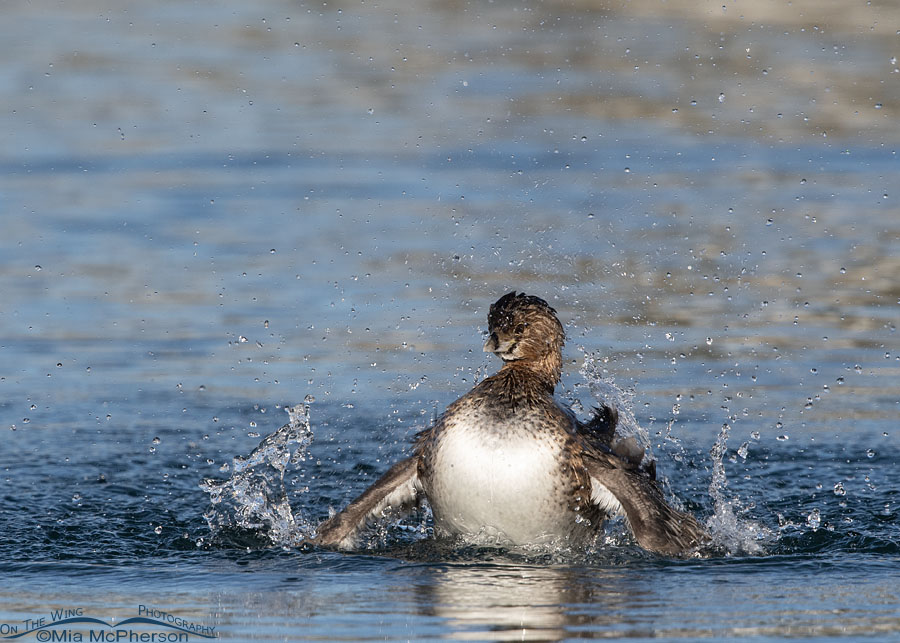This morning, I’m sharing a simple bathing Pied-billed Grebe photo that I took four years ago. I like this grebe image because of all the flying water droplets.
 Pied-billed Grebe bathing vigorously – Nikon D500, f7.1, 1/1600, ISO 400, Nikkor 500mm VR with 1.4x TC, natural light
Pied-billed Grebe bathing vigorously – Nikon D500, f7.1, 1/1600, ISO 400, Nikkor 500mm VR with 1.4x TC, natural light
During winter, I’m easily able to see and photograph this grebe species close to home, and I enjoy having many opportunities with them. Watching these grebes rest, squabble, hunt for food, and chase each other across the ponds is interesting and entertaining.
Seeing the Pied-billed Grebes bathing can and does make me laugh out loud. I recall doing exactly that the day I photographed this grebe taking a bath.
Birds bathe to keep their feathers in tip-top shape. The water helps remove dirt, parasites, bacteria, and other debris from their feathers.
This Pied-billed Grebe bathed so vigorously that afternoon that icy water droplets were flying several feet above her or his head and to their sides. I was amused and delighted to photograph this grebe bathing so enthusiastically.
In just a few weeks, the grebes at my local ponds will start to get ready for their breeding season. I’ve already noticed that some of them have begun to transition into breeding plumage. Pied-billed Grebes are year round residents here in northern Utah and they only leave the ponds during the winter if the ponds freeze completely over.
Around mid-February I might even be able to photograph these grebes making practice flights above the surface of the ponds. It is considered unusual or even rare to see this species in flight because they migrate at night. Most of the grebes at these ponds will leave to find suitable nesting spots when they are ready to breed.
Until the Pied-billed Grebes leave, I plan on enjoying seeing and photographing them on the ponds close to home.
Life is good.
Mia
Click here to see more of my Pied-billed Grebe photos plus facts and information about this species.


I spotted 1 Lesser Grebe by a Women’s Shelter in Brooklyn called The Tillary Women’s Shelter about 1 month ago which was pretty fat and brown.
I spotted 1 Lesser Grebe at the Port Authority Bus Stop by Gate 2 in Manhattan Times Square on New Years Eve 2023 which is Black.
I believe that they may belong near Martha’s Vineyard but I am not sure…
“Splish splash…” my sentiments exactly. Fun pic. Thanks Mia.
This came to mind. “Splish splash I was taking a bath” 😁
What a neat capture!
I adore watching birds bathe. They do so with such gusto – which you have captured superbly.